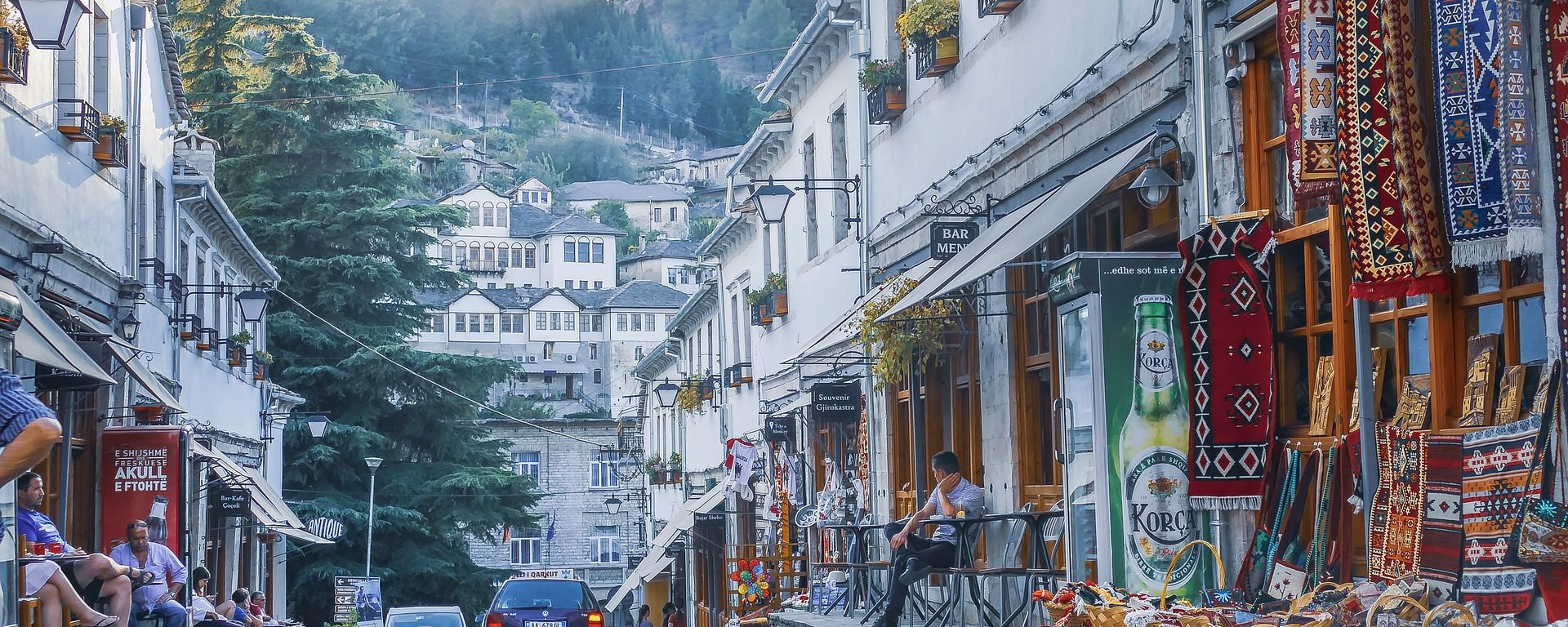For years, communities across Southern Albania experienced sluggish growth and an exodus of residents, especially youths, seeking opportunity elsewhere—even as the country rapidly emerged as an attractive tourist destination. Kristian Kondi, the manager of the restaurant Zonja Gjenë in Berat, recalls, “Ten years ago, when I was a child, there were only two or three shops in this alley. After 6PM, it was dead quiet, the lights were off and not a soul was around.”
That has all changed, as municipalities have moved to capitalize on the region’s rich history and natural beauty: UNESCO-recognized World Heritage cities, ancient fortresses, Ottoman-era architecture, scenic coastlines, and more. Through the Integrated Urban and Tourism Development Project (PIUTD), the World Bank, in partnership with the Government of Albania, has helped restore historic sites, improve nearby infrastructure, and expand tourism services—bringing new economic opportunities and jobs to communities in and around the cities of Berat, Gjirokastra, Përmet, and Saranda.
A Tourism Boom Fuels Local Growth, Job Creation
PIUTD focused on restoring 12 key tourist sites—such as the Qafa e Pazarit, the promenade in Saranda, as well as the Berat, Borshi, Gjirokastra, and Kanina Castles—by making them more accessible. Nearly 200,000m² of public space has been upgraded, including repairing cobblestone streets, paving roads, rehabilitating plazas, and introducing signage, sidewalks, lighting, new trails, benches, ramps, and visitor information points.
Tourism is now booming. According to INSTAT, Albania saw an 82% increase in tourist arrivals in 2024 compared to 2019. In Albania’s south, the numbers are even more striking, with Berat seeing nearly four times as many tourists in that same timespan and six times as many visiting Gjirokastra.
That influx, encouraged by public sector-led efforts, is catalyzing greater private sector investment. Local entrepreneurship is thriving, with families turning historic homes into bed and breakfasts, launching culinary and cultural experiences, and even investing in new infrastructure like hiking and bike trails, e-buses, boats and soon to be functional ziplines, which are spurring growth in areas like adventure tourism and outdoor recreation. Since PIUTD began implementation in 2019, the number of tourism-associated businesses in the project-supported area has more than doubled.
This growing ecosystem of private initiatives is extending the tourism season across Southern Albania, diversifying residents’ income sources, and turning restored heritage sites into vibrant economic centers. “We used to have tourists only in July and August. Now tourism in Saranda is year-round,” adds Rudina Liçaj, a tour operator in the city.
All this economic activity has been a gamechanger for the region’s job market, particularly in sectors like hospitality, tourism, and transportation. Importantly, this growth is inclusive: over half of the thousands of the new jobs created are held by individuals who are often excluded from the labor market, such as women, youth, and persons with disabilities.
“Ten people with disabilities work at the Gjirokastra Castle, taking part in various tasks including maintenance. Providing employment opportunities to persons with disabilities has enhanced their self-esteem, facilitated their social inclusion, and enabled them to earn an income that supports both themselves and their families
“, says Ardi Zuka, Regional Director of Cultural Heritage in Gjirokastra.
Opportunity Calls
The opportunity created by developing Southern Albania’s heritage tourism and knock-on private sector-investments has also reversed the region’s population decline, acting as a magnet for attracting returnees. Former residents are increasingly coming back to their hometowns to invest, innovate, and build their lives. Kristi Magllara, who returned to Saranda after 15 years living in Germany and Austria, now manages her family’s tourism business: “I noticed the growing momentum of tourism in Albania. I felt it was the right moment to return home, develop my family business, and bring new business ideas.”
“I never imagined I would return to Gjirokastra. But with all the investments made in the city, both in infrastructure and every other aspect of life, I decided to come back and invest all my savings in hospitality, in the very house where I grew up,” says Hajdar Ceribashi, the manager of the Aqueduct Inn Hotel in Gjirokstra.
This migration is breathing new life into communities and helping perpetuate the cycle of investment and development that is revitalizing Albania’s south.
A Model for Sustainable Development
At its core, PIUTD is preserving Albania’s natural and cultural assets while driving economic growth. From restoring Gjirokastra Castle to investing in public infrastructure, eco-tourism and visitor services, sustainability is embedded in the project’s every effort. Municipalities have gained valuable experience and skills, creating tourism units to ensure long-term sector development and impact.
“We’ve built more than roads, squares and facades,” Ervin Ceca, the Acting Mayor of Berat, asserts. “We’ve created a development model that values nature, culture, and community.”
Southern Albania’s experience shows how cultural preservation and heritage tourism, empowered communities, and international support can create jobs, spur investment, and spark economic transformation. By investing in its past, Albania is building a more prosperous future.

